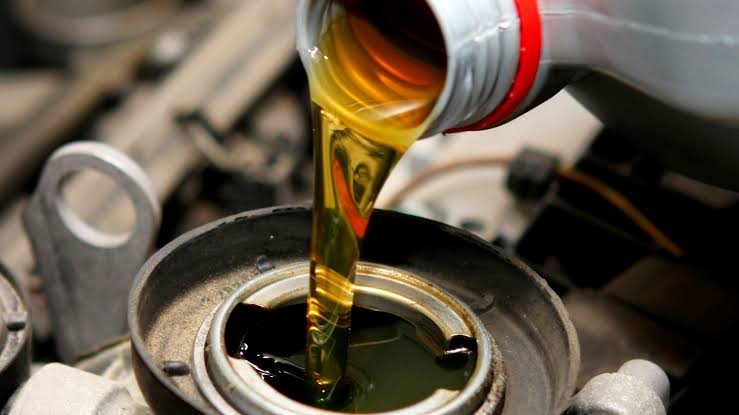What You Should Understand About Engine Lubrication System and How Oil Circulates in IC Engines
Irrespective of how smooth the surfaces of engine parts may appear, microscopic view shows that the surfaces are not actually smooth as they seem to be when viewed with normal human eyes.
The discovering of these coarse surfaces in engine parts had increased the need of using lubrication oil in any engine. Without such oil, moving parts of the engines will not function properly without wearing away each other’s’ surfaces.

When it comes to engines designs, the tolerances and clearances available between two parts are minimum and in some cases, gaskets help to reduce such further or help amend the imbalances in the joints of engine parts and help prevent oil or water leakages.
A poorly designed and manufactured engine will suffer overheating and frequent wearing of parts leading to the short lifespan of the engine because such may be having issues such as oil leakage, poor oil circulation, and easy oil pollution with water or smokes from the engine parts.
Oil does not only prevent wear and tears of engine parts, it also supports the cooling system of the engine in controlling the temperature of the engine.

However, to prevent the negative impacts that lack of lubrication could cause, all engines are equipped with the lubrication system that pumps, sprays or drips a constant supply of oil on all the moving metal components in the engine.
The circulation of the lubrication oil in the internal parts of the engine helps to cool pistons, valves, and the cylinder walls which are the hottest regions in any IC engine because they are in direct contact with the spark plugs and blow-torch temperatures as well as the heat generated from the power stroke in the combustion chambers.

The lubrication oil also helps the engine parts to make a gas-tight seal between the piston rings and cylinders and carries away harmful combustion waste produces during the power stroke but could not go out through the exhaust valve.
HOW THE ENGINE OIL CIRCULATES
The parts that oil always passes in any engine are usually focused on the moving parts, not the static parts. The lubrication system of any engine is designed to send enough volume of oil to all the moving parts of the engine once the engine is in operation.


The choice of circulation designs rests on the manufacturer’s idea, the design and size of the engine, but basically, the oil movement is usually aimed towards the moving or dynamic parts of the engine because that is where the high rate of wear and tear as well as heat generation is possible.
Basically, a typical car engine will have oil flow in a pattern like from the sump, a reservoir under the crankcase, it is drawn through a wire strainer into the pump.
Most pumps have an output of several gallons per minute and can produce pressures of more than 60psi. a relieve valve limits the pressure in the lubrication system mainly at the controlled rate of 40 and 60 psi.
From the pump, oil will be made to pass through the filter and into the main gallery drilled in the side of the crankcase.
Drillings connect the gallery to the crankshaft main bearing housings such that once the engine is running oil will be forced under pressure between the rotating crankshaft journals and the bearings.
Crankshaft usually has tiny holes drilled across its sections, the hollows in the shaft enable
The oil supplied to the main bearing to link to the big-end bearings at the shaft base where the connecting rods are fixed such that the arrangement makes it possible for all the bearings located on the crankshaft to be pressure-fed with oil.
When the oil gets to the base of the connecting through the actions of the crankshaft, the oil will be taken from there.
The rod may be drilled near its base so that a jet of oil sprays the cylinder walls and the underside of the piston as the crankshaft rotates.
Alternatively, the connecting rod may be drilled along its length so that pressurized oil from the big-end bearing is taken directly to the gudgeon pin to lubricate it.
The surplus then spills out to cool the underside of the piston and cylinder.
The camshaft operates at half engine speed, but it needs effective lubrication because of the high rubbing loads on the cams.
It is usual to pressure-feed the camshaft bearings and to splash or spray oil on the cam lobes.
A push-rod engine with its camshaft mounted low in the crankcase has oil piped to the hollow rocker shaft, from where it lubricates the rocker bearings and push-rod ends.
The excess oil will drip down the push-rod openings and coats the camshaft lobes on its way back to the sump.
For engines with overhead camshaft, two systems are popular and the simplest among them is the rotating of the camshaft lobes dip into a trough of oil.
An alternative way is to spray the cam lobes with oil. This is usually done by a perforated oil pipe alongside the camshaft.
Small holes drilled in the side of the pipe aim a jet of oil on to each rotating lobe. The surplus splashes over the valve assembly before dripping back to the sump. In the case where the car has an internal chain drives for the camshaft, a small tapping from the main gallery sprays oil on the chain links as they move past.
Conclusion
The post has covered the major areas regarding engine lubrication system and how oil circulates in IC Engines. However, if you need more details, use the comment section to give us a feedback.
